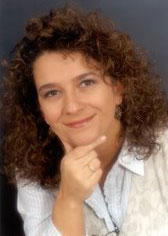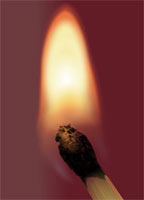y own introduction to the genre and stylistics of magic realism still embarrasses me. As an English undergrad, I was excited to talk about magic realism in a Spanish class; I was, after all, somewhat nerdy about all things literary. Unfortunately, my limping Spanish couldn’t keep up with my thoughts on the subject, and I fear that I erased any interest the rest of the class may have had in the genre.
Here’s to second chances!
Thanks to Oprah’s tacit blessing of magic realism through book club selections like Gabriel García Márquez’s One Hundred Years of Solitude and possible (although debated) nods to magic realism in Junot Diaz’s Pulitzer prize-winning The Brief Wondrous Life of Oscar Wao, the genre continues to be popular among novelists, short story writers, and readers alike.
Yet, it still tends to cause some confusion, doubt, and yes, even controversy in the literary world.
Let’s explore this genre as a potential context for the next story or novel that you have brimming in your head! To help with this process, we’re lucky to have the expertise of Tamara Kaye Sellman, a published magic realism author and former editor of Margin—a journal on magic realism. Sellman is a Pushcart Prize nominee and writing coach who mentors one magic realist author per year through her Magic Carpet Ride mentorship.

“Magic Realism and Fantasy are only similar in that they re-perceive realism in the same way. But beyond that, it's not the same at all.”
(Photo Left: Tamara Kaye Sellman)
A Marvelous Reality
It is easiest to frame an explanation of magic realism in the context of explosive passions. However, I’m not talking about Harlequin-bodice-ripper passion. I’m talking to authors who know, without a doubt, the passion that their character, setting, plot or action dictates is simply unable to be contained by the tools of the real world. The result, then, is a manifestation that would be, in the opinion of the reader, magical, yet still set in real life.
Magic in the real world? Isn’t that an oxymoron? In fact, the term lo real maravilloso, commonly attributed to a prominent Cuban author Alejo Carpentier, may be the best way to explain the concept, as it translates literally to “a marvelous reality”—or a reality that is somehow heightened, but still real. In working with this genre, writers and readers are within the framework of truth, but with magical happenings.
Now, we’re not talking spells and dragons and Harry Potter here, but, instead, fantastical occurrences and elements within modern or historic real-world stories that are often born of extreme passion, emotion or events.
The following example may serve to clarify the spark that often precedes a scene of magic realism, and also to clarify what exactly this magic is. In Laura Esquivel’s Like Water for Chocolate, Tita spends her entire life trying to deny the love she has for Pedro. At the end of their lives, they are finally able to give over to this passion, but Pedro dies in the act. In an attempt to reignite the fire, Tita actually consumes matches that re-ignite the spark in her body, and bring her to death with her partner. In reality, matches would cause little more than a nasty stomachache, but in lo real maravilloso, matches and passion are capable of so much more.

“As she chewed each match, she pressed her eyes shut and tried to reproduce the most moving memories of her and Pedro. The first time she saw him, the first time their hands touched, the first bouquet of roses, the first kiss, the first caress, the first time they made love. In this she was successful; when the match she chewed made contact with the luminous image she evoked, the match began to burn. Little by little her vision began to brighten until the tunnel again appeared before her eyes. There at its entrance was the luminous figure of Pedro waiting for her.” – Like Water for Chocolate
Where Did Magic Realism Originate?
Any basic lesson on magic realism would be remiss without a nod toward the literature of Latin America, in which the genre was made famous by big names such as Gabriel García Márquez, Jorge Luis Borges, Isabel Allende, and Laura Esquivel. These Spanish-speaking writers first pushed the genre into the limelight (hence my sad attempt at discussion in a Spanish class). While it’s important to keep in mind the rich, mythological, and folkloric history and storytelling traditions that Latin authors can draw on, keep in mind this is by no means a genre solely for those authors or that audience.
It is well-represented worldwide by authors like Salman Rushdie, Ursula LeGuin, and Amos Tutuola. I would even venture to say there are elements of magic realism in Barbara Kingsolver’s The Poisonwood Bible and Toni Morrison’s Beloved.
Authors new to the genre may stumble upon a debate about the exact tenets of the genre, how if differs from fantasy, and if it’s truly even a genre unto itself at all. Sellman says, “Magic Realism and Fantasy are only similar in that they re-perceive realism in the same way. But beyond that, it's not the same at all. Fantasy relies upon world-building and specific tropes; magic realism is set in the here and now and is far more politically driven.”
Before I knew what magic realism was, I had no idea where my writing fit in. It was just ‘weirdness.’
Is Magic Realism Accessible to Me?
In reaching out to new authors about this genre, I am often met with reluctance. Magic realism can be viewed as a genre that’s not accessible to the average reader and writer. Sellman believes the topic is often reserved for the world of MFA candidates and university settings. “Magic Realism can be a complicated narrative mode, one which has a definition that even the best of the best of the university set can't agree upon. Still, writers can benefit from understanding its inner workings. Before I knew what magic realism was, I had no idea where my writing fit in. It was just ‘weirdness.’ Now that I understand what it is, I can anchor my (story) inside a structure that makes sense.”
Understand, at its very simplest, magic realism can serve as a way for your character, plot, or setting to take that final step. If the gut feelings of your work are not coming across, perhaps stepping away from the real and over to a bigger reality is exactly what your novel needs.
Ready to Work Your Own Magic?
In addition to the basic definition above, work in this genre may share some of the following characteristics (and, as you go through this list, keep your novel or short stories in mind):
- Magical happenings are accepted by the characters without much remark or surprise.
- The magic is centered within a place, such as a community, or within a character, and is often a result of that person or place, and something they’ve done or felt.
- All answers are not given, nor asked for. Stories/plots and events are left unexplained and open to interpretation.
- Reality and magic co-exist within the story, within the chapter, and even within the same event. Although this may be surprising or disturbing for the reader, it is not so for the characters.
- The characters or narrator will often employ folklore and family stories to move the story along; sometimes these stories have an accepted magical element.
- Marginalized characters are central. These characters are sometimes powerless or organized against some much larger entity, such as the government, time, decay, sickness or similar.
Sellman says that the marginalized characters, and even marginalized authors, are one of the basics of magic realism. “At its base is the vocalization of the oppressed: people who have been exiled or stripped of their voice by power players (like governments, corporations, patriarchs, etc.). These are some of the least pretentious people in the world telling some pretty extraordinary tales.”
Let’s take a look at Like Water for Chocolate. Tita’s sister, Gertrudis, is destined for the hard work and servant hood required of most women her age in rural, Revolutionary-era Mexico. However, it is this same hard work that grants her an exit from her burden. This scene is the beginning of Gertrudis’ story arc in which she shakes off the traditional roles that are thematic to the novel, and begins a journey toward her true self.

“(Gertrudis) climbed up and down ten times, carrying buckets of water. It was brutal exercise, which made the heat of that burned her body grow more and more intense, until she nearly fainted. The only thing that kept her going was the image of the refreshing shower ahead of her, but unfortunately, she was never able to enjoy it, because the drops that fell from the shower never made it to her body: they evaporated before they reached her” – Like Water for Chocolate
This excerpt leads to the scene in which Gertrudis’ love interest, a revolutionary soldier, actually smells the scent of roses from her body heat, and comes from the next town over to carry Gertrudis from her planned life of domesticity and service.
The setting of the story can take on some of the sparkle available in the universe. Márquez set several of his short stories, along with One Hundred Years of Solitude in the fictional town of Macondo. On the surface, the setting is a poor banana-producing town likely located in tropical Colombia, but underneath, the lives and happenings that take place there have enough magic to permeate the locale, even at its most mundane. Chilean author Isabel Allende mirrors this same magic of place and setting in her book The House of Spirits. In both novels, the setting holds the magic that permeates the story.
Should you find, as an author, that your setting is carrying your characters, you may have another Macondo on your hands. Is your city/town/home so full that there must be some magic in it? Perhaps it’s time to explore why your setting speaks to you so much—and how you can better express its otherness.
“...most really compelling magic realism is not built through some writer's clever creative strategy...”
Is Magic Realism Appropriate For Your Story?
How do you know that magic realism is the right direction for you? Some writers seem to just know, while others have very specific reasons for placing their story within the framework of magic realism.
R.M. Almeida is an adjunct professor and new novelist who made the decision quite purposefully. “I wanted to provide a layer of anonymity for the story I was writing, since it was (in reality) a story about me. Many people have a need to flee from reality, or to find a way in dealing with the real fears they face.”
But Sellman hesitates to direct new writers to purposefully try it. “I would say that anybody who wants to explore truth telling as their narrative aim should consider magic realism, but I hold back a little even as I say this, because most really compelling magic realism is not built through some writer's clever creative strategy; rather, it just happens to be how the writer's story unfolds organically, popular perceptions of reality be damned. Writers who decide, ‘hmmm, I think I'll write some magical realism’ will usually fail at it because they see it only as a genre and not as the vocalizing, political narrative mode that it actually is.”
“While I want to encourage those writers who organically understand the nature of magic realism in their own work, I also want to discourage people from dressing up a story to make it somehow unique. It’s not window dressing, it's not even a technique, per se; it's simply a reconstruction of realism that tells the truth from a different, often extra-ordinary slant. The best advice I can offer for writers who want to ‘try on’ magic realism is actually the best advice for any writer wanting to write any particular form: read the masters first.”
Ready to Go Resources
Should you find your story unable to be contained by the dictates of the everyday, begin your exploration of magic realism using the sources below.
And, one last thing: you can use this genre, I’ve seen many a new writer find the ground beneath them when they opened their eyes to a new concept or mode of expression for their character. It’s a place to go to add that extra dimension and brilliance—and no Spanish is required!
------------------
The Masters—authors of both short stories and novels that use magic realism:
- Gabriel García Márquez
- Haruki Murakami
- Franz Kafka
- Salman Rushdie
- Angela Carter
- Laura Esquivel
- Louise Erdrich
- Toni Morrison
- Isabel Allende
- Zora Neale Hurston
- Amos Tutuola
- Ben Okri
- Jean Rhys
- Nalo Hopkinson
- Barbara Kingsolver (debated)
- Jorge Luis Borges (debated)
Markets:
- Duotrope.com has a magical realism search section which results in 168 potential outlets for you work
Programs/Conferences:
- The Association of Writers and Writing Programs’ annual conference often hosts discussions and workshops on the genre. www.awpwriter.org
- WISCON, the Feminist Science Fiction convention, held in Madison annually. www.wiscon.info
Books on the Craft:
***

Allena Tapia is a freelance writer and editor, and owns her own firm, GardenWall Publications: www.gardenwallpublications.com.
She has contracts with Sharpe Reference, the New York Times’ About.com, and is a longtime contributor to Latino Leaders magazine. She teaches a class on freelance writing through Lansing Community College in Lansing, Michigan, and plans to retire to Mexico on the proceeds from her first novel.